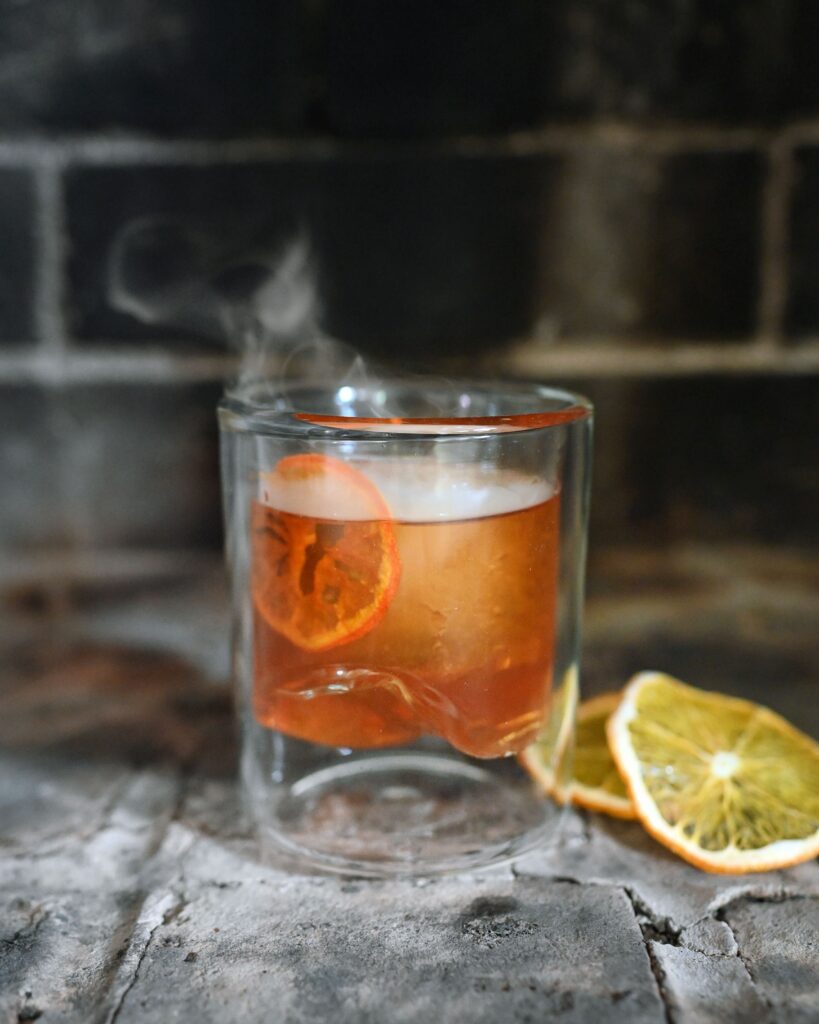There is nowhere quite like Banff and Jasper in the Canadian Rockies; the dramatic mountains, gemstone-hued lakes, and lush green forests make it the perfect destination for those seeking out some time in nature. Of course, the beauty of the area can be celebrated by enjoying all that it has to offer: skiing in the winter, hiking in the summer, exploring said stunning lakes by boat, and so much more. Despite the proximity to one another, however, both destinations are quite different.
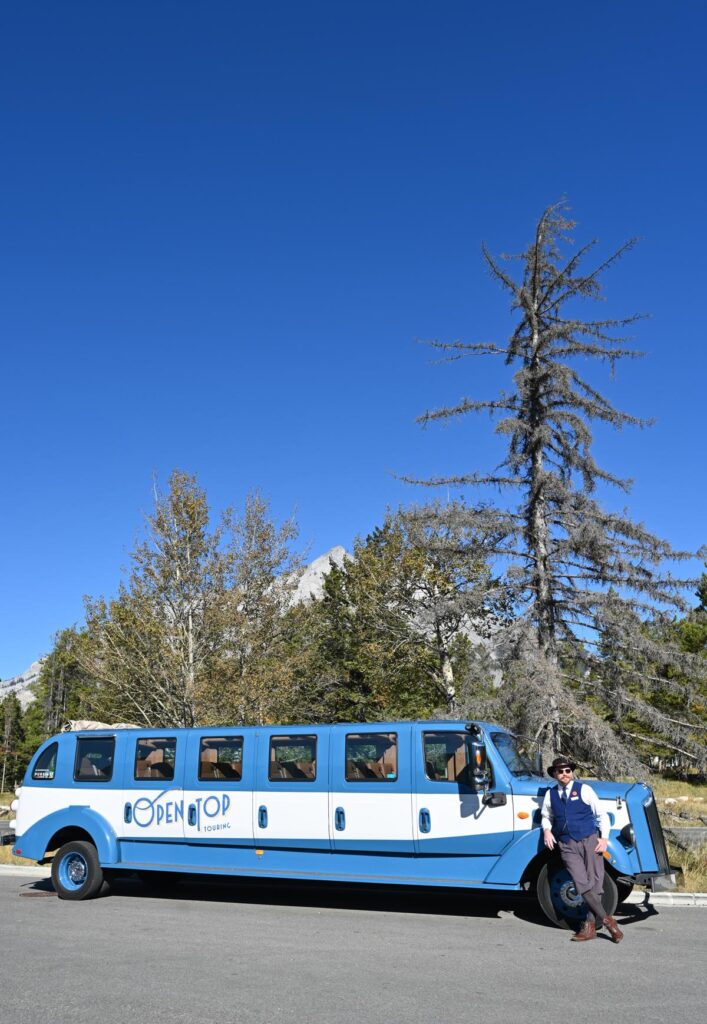
Banff, located about an hour and a half from Calgary International Airport (YYC), is Canada’s first national park, the world’s third, and is part of the Canadian Rocky Mountain Parks UNESCO World Heritage Site. The area was inhabited by Indigenous Peoples (see note) for centuries before Europeans began to arrive in the 1700s, and they were integral in guiding the settlers through the rough terrain along with teaching them their ways of living off the land. In 1893, a few Canadian Pacific Railway workers found natural hot springs on Sulphur Mountain, and those springs are what prompted the government to protect the area, later becoming the start of Banff National Park.
Back then, Banff was a place full of trailblazers and mavericks; the townsite went up quickly, and many wild west-esque characters made their way to the area. Folks like Ebenezer William “Wild Bill” Peyto, who was one of Banff’s first wardens, and Bill and Jim Brewster, who offered guided excursions in the Rockies, frequented the bar at the Mount Royal Hotel, solidifying it as a watering hole for locals and visitors alike, and the rest is history.
Today, the Mount Royal Hotel dons a restaurant called Brazen, named in honour of those trailblazers and mavericks, and the menu reflects that with modern takes on Canadian-inspired classics. At the bar, drinks like the Smokin’ Warden (aptly referring to Bill Peyto) and Brazen’s Shaft (referring to local mining operations) are there to help guests strike up an appetite, and the drool-inducing Ginger Beef, a Calgary-born classic, is there to fill up bellies with Certified Angus Beef hangar steak, blistered shishito peppers, and a beautiful ginger syrup that’s lit up tableside and poured over the sizzling dish.
Naturally, people who make their way to Banff have a focus on the natural beauty of the area, but to get a true taste of the Rockies, you have to try out the local culinary offerings. Ready to bring a taste of the Rockies to hungry visitors and locals alike, the brilliant minds behind some of the best restaurants in Banff and Jasper have curated menus that make the most of Canadian ingredients and hospitality.
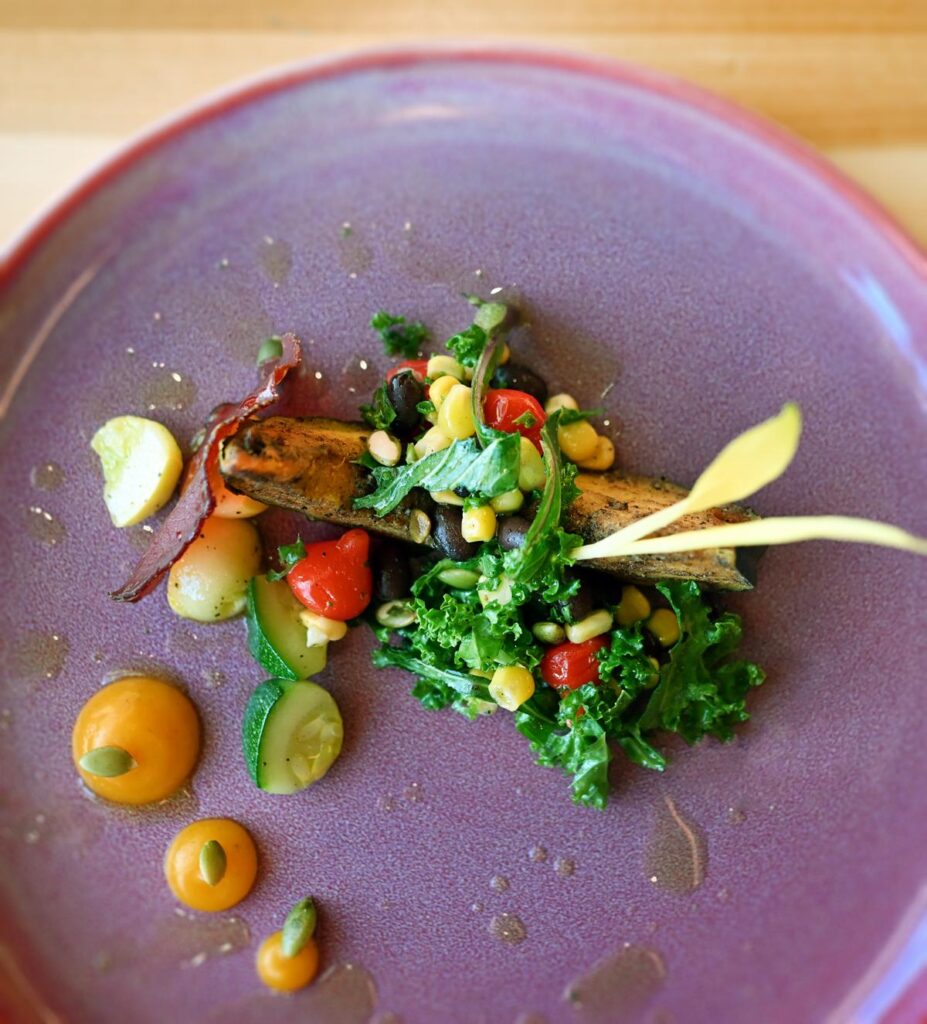
“The word ‘hospitality’ is thrown around a lot,” says Scott Hergott, the Executive Chef for Pursuit Collection’s Banff properties, “but to me it is the cornerstone of the food and beverage industry.” While important, good food isn’t just about taste, it’s about how it makes you feel. “The goal is to create amazing experiences that not only nourish our guests but leave them with a memory or an experience that they remember for a lifetime.”
While down in the town of Banff visitors can get a taste of the old world at Brazen; it’s higher up, specifically 883 metres (2,900 feet) higher, that truly offers a once in a lifetime experience. After an eight-minute ride on a gondola (or a hike we’d rather not discuss), guests can make their way to the top of Sulphur Mountain. Here, you can wander, take epic photos of the six mountain ranges in view, and even catch northern lights if you’re there on the right evening at the right time. That said, even if the weather is not cooperating and you and up with a cloudy view, there are few things better than dining at Sky Bistro.
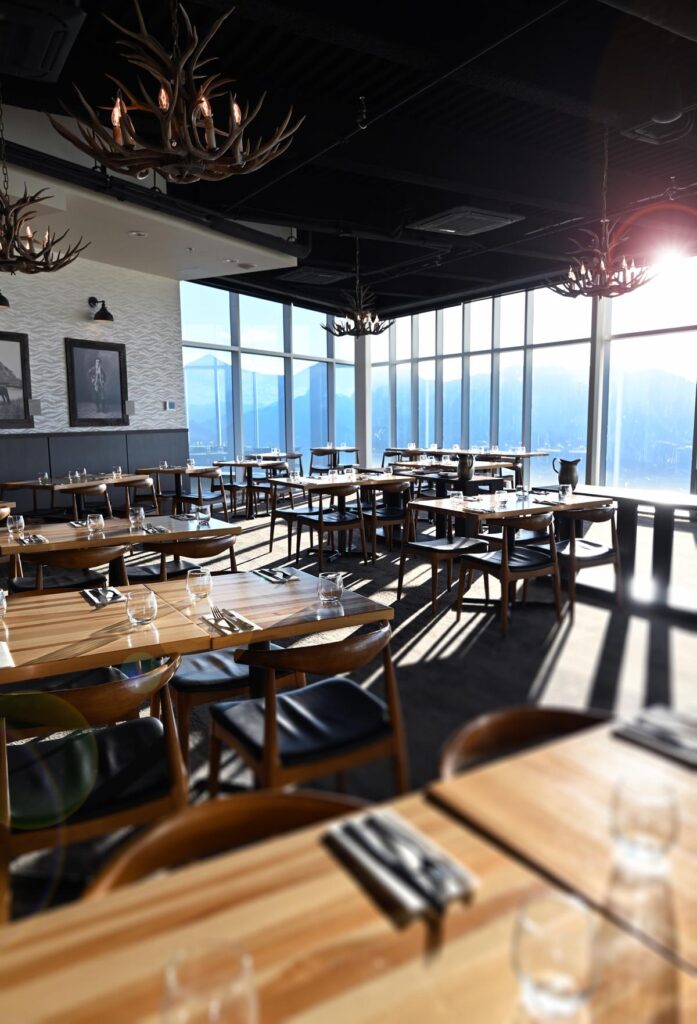
The restaurant, located at the top of the gondola, dons floor to ceiling windows (for ogling those sunsets, northern lights, or clouds… either way, it’s gorgeous), and a Canada-focused menu that heavily relies on local producers and changes seasonally. Here, the chefs try to incorporate the freshest sustainably sourced ingredients possible. “We’ve taken it one step further at the Banff Gondola,” says Hergott. Who needs farm to table when you can have farm to summit? Dishes like the Seafood Chowder (currently on the menu at Sky Bistro, recipe follows) have ingredients from all over the country, like Pacific salmon, BC prawns, and Canadian mussels, while other dishes are more local, using producers like Certified Angus Beef and Sylvan Star Cheese.
As the growing season in Alberta is just three to four months, it can be difficult to source fresh produce that is both local and sustainable. Hergott is a fan of Calgary’s Deepwater Farms and Red Fox Fungi Farms, who each provide year-round greens and gourmet mushrooms, respectively, and forego the use of pesticides and herbicides. “We take pride in working with local suppliers and farmers to deliver a quality product,” says Hergott, “our main focus is to not over complicate our dishes and let the food do the work.”
Onward to Jasper, just a few hours’ drive northwest of Banff, but a beautiful one at that, for another culinary experience. The drive itself is one of the most stunning in Canada; the Icefields Parkway winds through 232 kilometres (about 150 miles) of rugged peaks, dramatic glaciers, and fairytale-worthy aquamarine lakes that provide mirror images of the water below and mountains above.
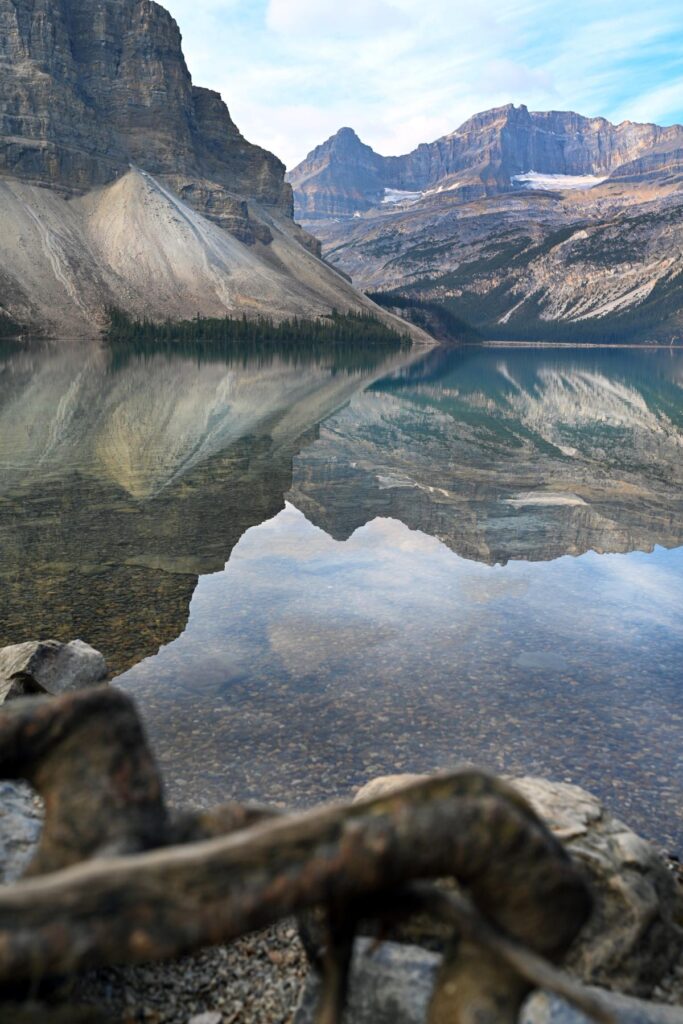
The town of Jasper is much quieter than Banff, perhaps due to its slightly less-accessible location, but offers just as much as its more tourist-laden counterpart. Here, the focus on food is more about incorporating the rawness of Jasper into the menu. “Locally farmed and foraged fare is at the heart of what we do,” says Jamie Hussey, the Director of Food and Beverage at Pursuit Collection’s Jasper properties. “Like the seasons, our menus are constantly changing to incorporate natural, local ingredients.”
At Terra, located in the Crimson Hotel, they “operate in the ideology of local ingredients with world techniques,” says Hussey, “we draw inspiration from the park, Alberta and Canada.” While they can’t forage within the park, they take note of what’s available locally, and forage just outside the parks boundaries, making it as local as possible.
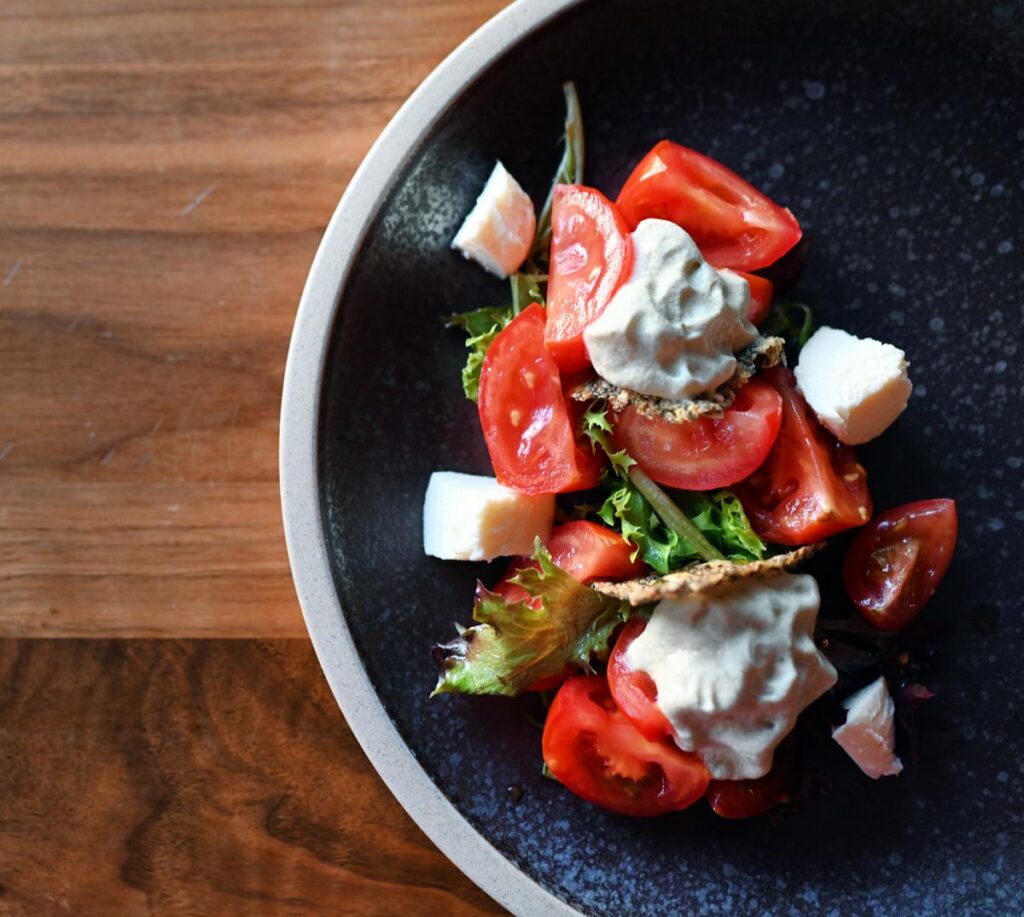
The Pines Restaurant, at Pyramid Lake Resort, is all about the rustic elegance of Jasper. “Our flavours need to be like the landscape, bold and unmistakable,” says Darren Fabian, Director of Beverage and Bars for Pursuit. “Speaking of cocktails specifically, Pyramid Lake is a pristine body of water surrounded by an alpine meadow and peaks. You can see mountain juniper on the hiking trails, so we tend to be gin-focused there.”
As in Banff, the folks behind Jasper’s food and beverage program strive to create inspired classics. “We take classic cocktails and add local twists, garnishes or flavour,” says Hussey. “We like bold, balanced cocktails. We add smoke, spruce, maple, juniper and local spirits.”
Some ingredients, like haskap berries, are only found in a handful of places across the country, and their growing season is very short. “It’s up to us to find as many ways as possible to use an ingredient like that both on the culinary and beverage side without being repetitive,” says Fabian. A cocktail like the Bonfire Old Fashioned, served at Terra, is the perfect example of something utilizing local ingredients. Featuring a “berbon” made of Alberta-grown Taber corn, which is distilled in the method of Kentucky bourbon, this drink is a simple, smokey beverage that truly epitomizes a classic cocktail with a Rocky Mountain flair (recipe follows).
After a few rough years due to the pandemic, the restaurant scene in the Rockies has been interesting. Chef Scott is excited to see where everything goes now, after such uncertainty, and is grateful for the support they’ve had. “We have lost a lot of talented and amazing colleagues during the pandemic, so be patient,” he says, “our passion and drive to nourish each and every one of our guests has not wavered!”
Now, more than ever, the Rockies are ready to welcome visitors. Cocktails in hand, beef on the grill, it’s time to get your appetite ready for a delicious trip to Banff and Jasper.
WHAT TO DO
In Banff…
The Banff Gondola (en route to Sky Bistro) is the perfect way to venture to the top of Sulphur Mountain. Hiking, incredible views, and delectable dining await! Open Top Tour takes visitors around Banff townsite, out toward Mount Norquay, and more. The Lake Minnewanka Cruise, available seasonally, takes visitors on a historical and geological trip along the second longest lake in the mountain parks of the Canadian Rockies.
In Jasper…
Wander through downtown Jasper and enjoy a pint at Jasper Brewing Co., check out Indigenous art at Our Native Land, or hop on a cruise at Maligne Lake and take in the history of the area, or venture 280 metres (918 feet) above a rugged canyon on the Jasper Skywalk (keep your eyes out for mountain goats and pikas!).
WHERE TO STAY
In Banff, the elk + avenue hotel offers large, modern spaces in the heart of town. For those looking to stay somewhere in the middle of all the action (shops, nightlife, restaurants), the legendary Mount Royal Hotel is a great option.
In Jasper, The Crimson is a modern hotel close to shops, restaurants, and an assortment of trailheads. A quick walk down the street is the Forest Park Hotel, with spacious, modern rooms and plenty of cozy spots to warm up après-ski.
HOW TO GET THERE
Upon landing at Calgary International Airport (YYC), you can take the Brewster Express bus ($79 one way, $135 round trip) to Banff, but if you’re venturing to Jasper as well, renting a vehicle is the way to go.
More details on lake cruises, Open Top Tours, the Jasper Skywalk, and accommodation can be found at www.banffjaspercollection.com
Note: It is important to acknowledge that both Banff and Jasper are located in Treaty 6, 7, and 8, as well as the traditional lands of many more Indigenous groups, and that these people were forcibly removed from the area in the early 1900s, disconnecting them from their culture. Parks Canada now works closely with Indigenous communities to “strengthen connections with traditionally used lands and waters, respect Indigenous rights and expand and ensure the presentation and commemoration of Indigenous histories and cultures within the park.”
Stephanie Arsenault is a freelance food and travel writer and photographer currently based out of San Diego. Find her online @globaldish, or in person probably on the hunt for pizza.


